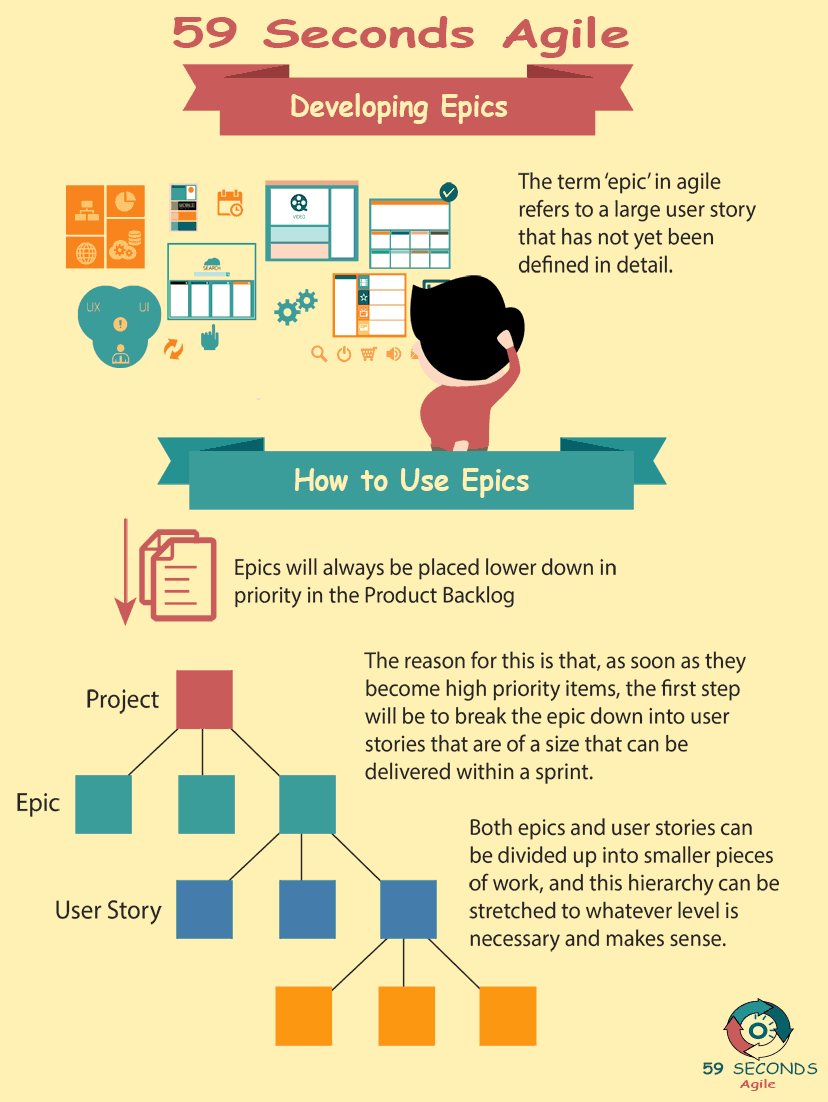This article looks to discuss Epic Stories and Personas. This article is part 7 of an 8 section discussion on developing Epics and includes training videos. Part 1 is available by following this link.
Epic Stories and Personas
A 59 Seconds Agile Training Video
Continue to Part 8 Below
Epic Stories and Personas
A 59 Seconds Agile Article
This article provides an ‘Introduction to the Developing Agile Epics and personas’ and looks to discuss what an Epic Is and what a Persona is within an Agile project.
Epic Stories and Personas: Type of Persona
The number of personas you need to create is entirely dependent on your project and product. In exceptional cases, where the product being developed is a backend application, you might not even need a persona. Generally, you will need at least one, but not more than 2 primary personas. Here are typical personas that will influence your design:
The primary persona is the persona for whom you are developing the product. You should have a very clear goal, a key benefit and objective for the primary persona, as well as subsidiary objectives and benefits. These are the headlines for the overall acceptance criteria for the product. They should also synchronise with what was defined for the minimum viable product. You could have another primary persona, but any additional personas would be secondary.
Epic Stories and Personas: Secondary Personas
The secondary persona is a persona whose goal and objectives apply to a particular product feature or epic story. Especially where a product is complex, you might find you need secondary personas for a specific sprint. You may have previously worked on a project, where the project scope was defined as “What the Project is”, followed by “What the Project is Not”.
Epic Stories and Personas: Negative Personas
Negative personas fulfil a similar purpose; they are not candidates for the new product, and their biographies describe why the product is not a good fit for them. This is a useful way of ensuring that all the bases have been covered in the product design; by specifying what is not needed, gaps in what is needed can be discovered.
A combination of the habits, goals and objectives of these personas will help you visualize the project outcomes and a finished product that is in sync with the expectations of your users, real and fictitious.
Continue Reading —> Next
Developing Agile Epics
A 59 Seconds Agile Video Animation
Continue Reading —> Next
User Stories Applied
A 59 Seconds Agile Book Review
User Stories Applied by Mike Cohn is one of our favourite books on Agile User Stories. The book starts with an overview into user stories, and details what a user story is and the different aspects of them. He then discusses how to go about writing a user story, and provides details of the INVEST criteria that can be used to determine if the story is meeting all of its objectives. Next Mike gives an in depth discussion of who user stories are written for and where to begin when gathering the details for them. The book then discusses acceptance testing user stories, including how to go about specifying these criteria and the responsibilities of the development team and customers during this process.
Developing Agile Epics
A 59 Seconds Agile Infographic

